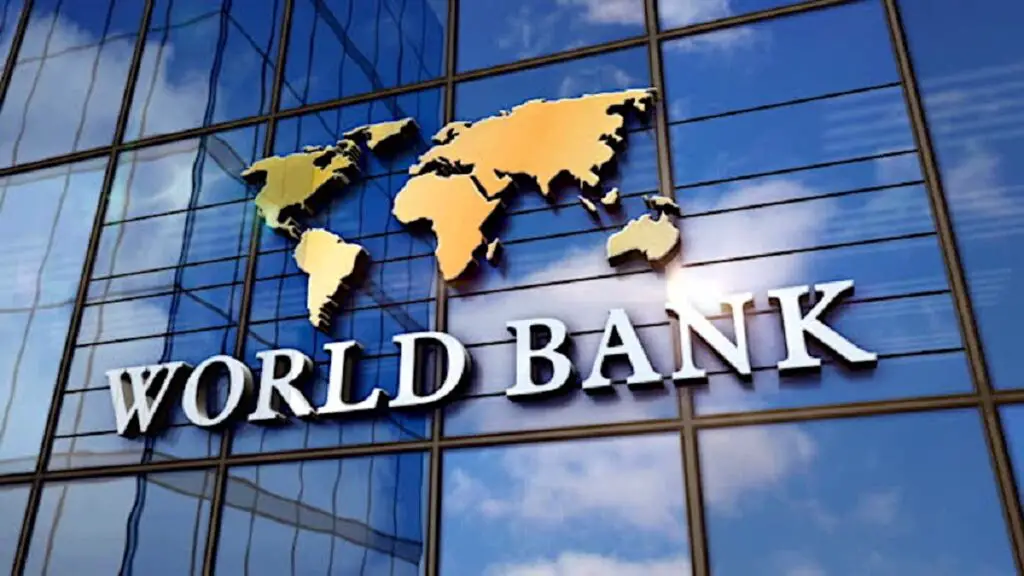- The World Bank attributes the downgrade to the recent conflict in the Middle East, which has heightened geopolitical risks and raised uncertainty in commodity markets.
- Growth for Sub-Saharan Africa is projected to accelerate to 3.8 per cent in 2024 and firm further to 4.1 per cent next year.
- The lender has upgraded Kenya’s GDP growth to 5.2 per cent due to easing inflation.
Global growth is projected to slow for the third consecutive year, decreasing from 2.6 per cent last year to 2.4 per cent this year, according to the World Bank.
In its January 2024 Global Economic Prospects report, the lender states that following a sharp slowdown in 2022 and a further decline last year, global output growth is set to decrease slightly this year.
This is occurring as global economic activity continues to soften due to the impacts of tight monetary policies, restrictive financial conditions, and weak growth in global trade.
The World Bank attributes this downgrade to the recent conflict in the Middle East, which has heightened geopolitical risks and increased uncertainty in commodity markets, potentially adversely affecting global growth.
“This comes as the world economy continues to grapple with the lingering effects of the overlapping shocks of the past four years—the Covid-19 pandemic, the Russian Federation’s invasion of Ukraine, and the rise in inflation and subsequent sharp tightening of global monetary conditions,” the lender states.
The global growth outlook is expected to rebound in 2025, reaching a pace of 2.7 per cent. However, this comes with substantial downside risks, including an escalation of the recent conflict in the Middle East, financial stress, persistent inflation, trade fragmentation, and climate-related disasters.
The lender advises global cooperation to provide debt relief, facilitate trade integration, address climate change, and alleviate food insecurity.
It emphasizes that across all Emerging Market and Developing Economies (EMDEs), proper macroeconomic and structural policies, along with well-functioning institutions, are critical to boosting investment and long-term prospects.
Read also: AfDB cuts Africa’s 2024 growth forecast citing impact of persistent global shocks
Regional focus projection
Growth for Sub-Saharan Africa has been projected to accelerate to 3.8 per cent in 2024 and firm further to 4.1 per cent in 2025, up from 2.9 per cent in 2023. However, the lender cautions that the outlook is subject to several downside risks.
“These include a rise in political instability and violence, such as the intensification of the conflict in the Middle East, disruptions to global or local trade and production, increased frequency and intensity of adverse weather events, a sharper-than-expected global economic slowdown, and a higher risk of government defaults,” it says.
The World Bank explains that an escalation of the conflict in the Middle East could worsen food insecurity in the region. A conflict-induced sustained oil price spike would not only increase food prices by raising production and transportation costs but could also disrupt supply chains.
This is in spite of global food and energy prices retreating from their peaks in 2022. However, the World Bank still cautions that disruptions to global or local trade and production could rekindle consumer price inflation, especially food price inflation, throughout the region.
“Furthermore, the sharp rise in public debt service costs in many Sub-Saharan African (SSA) economies since the pandemic has increased the need for debt reduction, particularly in highly indebted countries.”
Nevertheless, the World Bank states that the projections for regional growth in 2024 and 2025 are little changed from June forecasts, but the aggregates mask a mix of upgrades and downgrades at the country level.
“While growth in the largest economies in SSA is expected to lag behind the rest of the region, non-resource-rich economies are forecasted to maintain a growth rate above the regional average.”
Read also: IMF cuts Sub-Saharan Africa GDP growth forecast to 3.5%
World Bank’s country focus: Kenya
The lender has upgraded Kenya’s GDP growth to 5.2 per cent due to easing inflation.
This represents an upward projection from the previous year and further anticipates the country’s GDP growth to stabilize at 5.3 per cent next year.
In the preceding year, the lender had pegged the country’s GDP growth at 5.0 per cent, following an upgrade from 4.8 per cent in 2022.
“This is largely attributed to the diminishing inflationary pressures and the easing of financial conditions,” states the lender in a released statement.
In comparison to Tanzania and Uganda, Kenya’s prospects for this year are the least favorable. The economies of the neighboring countries are expected to grow at 5.5 and 6.0 percent, respectively.
Read also: World Bank: Kenya’s 5.2 per cent growth forecast depends on State’s loan appetite

